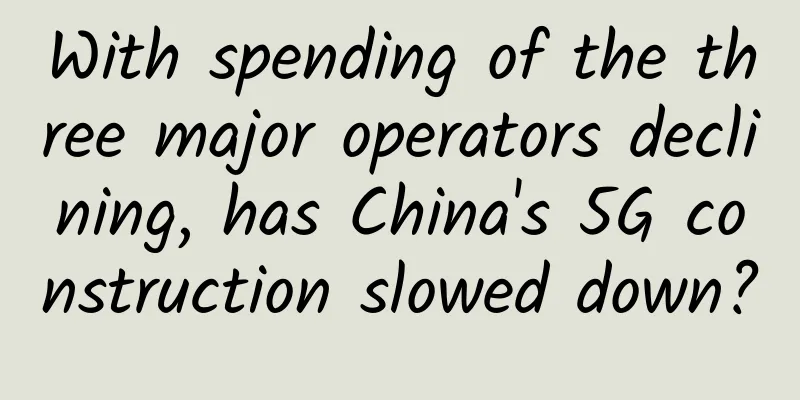Interview Question Series: 12 Deadly Questions on Network

1. What is your understanding of the TCP/IP four-layer model and the OSI seven-layer model?In order to enhance versatility and compatibility, computer networks are designed as hierarchical structures, with each layer following certain rules.
Therefore, there is an abstract network communication reference model such as OSI, which allows computer network systems to be connected to each other according to this standard.
TCP/IP is a four-layer structure, which is equivalent to a simplification of the OSI model.
To sum up, the physical layer connects computers through physical means, the data link layer groups the bit stream data, the network layer establishes host-to-host communication, the transport layer establishes port-to-port communication, and the application layer is ultimately responsible for establishing the connection, converting the data format, and finally presenting it to the user. 2. What is the process of TCP 3-way handshake?The server needs to listen to the port before establishing a connection, so the initial state is LISTEN.
3. Why 3 times? 2 or 4 times?Because TCP is a duplex transmission mode, it does not distinguish between the client and the server, and the establishment of a connection is a two-way process. If there are only two times, a two-way connection cannot be established. It can be seen from the fact that the SYN and ACK replied by the server when establishing the connection are combined into one time, it does not need four times. Why wave four times? Because the ACK and FIN of wave cannot be sent at the same time, because the deadline for data sending is different. 4. What about the process of four waves?
5. Why do we have to wait for 2MSL to shut down?
6. How does TCP ensure the reliability of the transmission process?Checksum: The sender calculates the checksum before sending the data, and the receiver does the same after receiving the data. If they are inconsistent, then the transmission is incorrect. Confirmation response, sequence number: When TCP is transmitted, the data is numbered, and each time the receiver returns ACK, there is a confirmation sequence number. Timeout retransmission: If the sender does not receive ACK after sending data for a period of time, it will resend the data. Connection management: three-way handshake and four-way wave process. Flow control: The TCP protocol header contains a 16-bit window size. The receiver will fill in its own immediate window when returning ACK, and the sender will control the sending speed according to the size of the window in the message. Congestion control: When data is first sent, the congestion window is 1. Each time an ACK is received, the congestion window is increased by 1. The smaller value of the congestion window and the received window is used as the actual sending window. If a timeout retransmission occurs, the congestion window is reset to 1. The purpose of this is to ensure the efficiency and reliability of the transmission process. 7. What is the process of a browser requesting a URL?
8. Do you know how HTTPS works?
9. What are the implementation methods of load balancing?DNS: This is the simplest load balancing method, generally used to achieve geographical load balancing. Users in different regions can return different IP addresses through DNS resolution. This type of load balancing is simple, but its scalability is too poor, and the control lies with the domain name service provider. Http redirection: load balancing is achieved by modifying the Location field in the Http response header, using Http 302 redirection. This method affects performance and increases request time. Reverse proxy: A mode that acts on the application layer, also known as layer-7 load balancing, such as the common Nginx, which generally has a performance of 10,000. This method is simple to deploy, low-cost, and easy to expand. IP: This mode acts on the network layer and the transport layer, also known as layer 4 load balancing, which achieves the effect of load balancing by modifying the IP address and port of the data packet. Common ones include LVS (Linux Virtual Server), which usually supports 100,000 concurrent connections. According to the type, it can also be divided into DNS load balancing, hardware load balancing, and software load balancing. Among them, hardware load balancing is expensive, but has the best performance, reaching the million level. Software load balancing includes Nginx and LVS. 10. What are the differences between BIO/NIO/AIO?BIO: Synchronous blocking IO, for each client connection, the server will correspond to a processing thread, and connections that are not assigned to a processing thread will be blocked or rejected. It is equivalent to one thread for each connection. NIO: Synchronous non-blocking IO, based on the Reactor model, the client communicates with the channel, the channel can perform read and write operations, and the multiplexer selector is used to poll the channels registered on it, and then perform IO operations. In this way, when performing IO operations, only one thread can be used to process, that is, one thread per request. AIO: Asynchronous non-blocking IO, which goes a step further than NIO. The operating system handles the request completely and then notifies the server to start a thread for processing. Therefore, one thread is effectively requested. 11. So how do you understand synchronization and blocking?First of all, you can think of an IO operation as consisting of two parts:
The difference between synchronization and asynchrony lies in the second one, the actual IO read and write operations. If the operating system completes it for you and then notifies you, it is asynchronous, otherwise it is called synchronization. The difference between blocking and non-blocking is that, first, an IO request is initiated. For NIO, after an IO operation request is initiated through a channel, it actually returns, so it is non-blocking. 12. What is your understanding of the Reactor model?The Reactor model consists of two components:
It includes several implementations: Single-threaded ReactorIn this mode, the reactor and handler are in the same thread. If a handler is blocked, all other handlers will be unable to execute and the performance of multiple cores cannot be fully utilized. Single Reactor MultithreadingSince decode, compute, and encode operations are not IO operations, the idea of the multi-threaded Reactor is to give full play to the characteristics of multi-core and separate non-IO operations. However, a single Reactor is responsible for all event monitoring and response work. If there are too many connections, there may still be performance issues. Multi-Reactor Multi-ThreadIn order to solve the performance problem of a single Reactor, a multi-Reactor model was created, where the mainReactor establishes the connection and multiple subReactors are responsible for data reading and writing. |
<<: Protocol-Oriented Programming and Cocoa (Part 2)
>>: Quick Start with Linkerd v2 Service Mesh
Recommend
Let’s talk about connecting industrial protocols and the cloud
Industrial protocols are communications between i...
IT maintenance: Five aspects of daily switch maintenance, all practical information!
With the rapid development of informatization, sw...
Huawei Cloud Private Cloud Solution Reaches New Success at the End of the Year Sixteen Words Connect Enterprises Now and in the Future
[51CTO.com original article] Huawei is a company ...
5G VS Wi-Fi6: What are the differences in technology? Which one is more mature in application?
[[415817]] 5G is the abbreviation for the fifth g...
Do you really understand the network process of IoT terminal devices connecting to the IoT platform?
Nowadays, we use a large number of IoT devices in...
95IDC: Hong Kong/Japan cloud hosting quarterly payment 50% off, starting from 75 yuan/quarter
95IDC is a company registered in Hong Kong. It wa...
ZJI Double 11 self-operated servers start at 55% off, Hong Kong Kwai Wan E5 servers start at 522 yuan/month
ZJI has released this year's Double 11 promot...
Sharktech: 1Gbps unlimited traffic/60G high-defense server starting at $79/month, available in Los Angeles/Denver/Chicago/Netherlands data centers
Sharktech has integrated resources and updated in...
Using tunneling protocol to achieve transparent communication between different dubbo clusters
[[375332]] Preface The author has recently comple...
Will broadband market operators monopolize the market? Private capital faces difficulties
On November 26, 2014, the Ministry of Industry an...
6 trends that will boost the impact of IoT in 2018
In 2016-2017, the trend of IoT was widely accepte...
5G is the best? GSA: Gigabit LTE is advancing rapidly
[[375841]] When it comes to the world's hotte...
Let's talk about HTTP/3, QUIC, how do they work?
Why do we need HTTP/3? One important reason is to...
I2C case using SHT3x-DIS temperature and humidity sensor
To learn more about open source, please visit: ...









